KIFC1
-
Official Full Name
kinesin family member C1 -
Overview
Kinesin-like protein KIFC1 is a protein that in humans is encoded by the KIFC1 gene. -
Synonyms
KIFC1;kinesin family member C1;kinesin like 2 , KNSL2;kinesin-like protein KIFC1;HSET;kinesin-like 2;kinesin-like protein 2;kinesin-related protein HSET;KNSL2;MGC1202;MGC149736;MGC149737
Recombinant Proteins
- Human
- Rat
- Chicken
- Mouse
- Zebrafish
- E.coli
- Mammalian Cells
- Wheat Germ
- HEK293
- In Vitro Cell Free System
- His
- GST
- Non
- Avi
- Fc
- Myc
| Cat.# | Product name | Source (Host) | Species | Tag | Protein Length | Price |
|---|---|---|---|---|---|---|
| KIFC1-382H | Recombinant Human KIFC1, His-tagged | E.coli | Human | His | C-344aa | |
| KIFC1-3260R | Recombinant Rat KIFC1 Protein | Mammalian Cells | Rat | His |
|
|
| KIFC1-3660C | Recombinant Chicken KIFC1 | Mammalian Cells | Chicken | His |
|
|
| KIFC1-42H | Recombinant Human KIFC1 protein, GST-tagged | Wheat Germ | Human | GST | 1-673 a.a. |
|
| KIFC1-43H | Recombinant Human KIFC1 protein, GST-tagged | Wheat Germ | Human | GST | 53-152 a.a. |
|
| KIFC1-8654M | Recombinant Mouse KIFC1 Protein | Mammalian Cells | Mouse | His |
|
|
| KIFC1-8807Z | Recombinant Zebrafish KIFC1 | Mammalian Cells | Zebrafish | His |
|
|
| KIFC1-363HCL | Recombinant Human KIFC1 lysate | HEK293 | Human | Non |
|
|
| KIFC1-0687H | Recombinant Human KIFC1 Protein (Q305-K673), Tag Free | E.coli | Human | Non | Q305-K673 |
|
| KIFC1-0688H | Recombinant Human KIFC1 Protein (Q305-K673), His tagged | E.coli | Human | His | Q305-K673 |
|
| KIFC1-2916R | Recombinant Rat KIFC1 Protein, His (Fc)-Avi-tagged | HEK293 | Rat | Avi&Fc&His |
|
|
| KIFC1-2916R-B | Recombinant Rat KIFC1 Protein Pre-coupled Magnetic Beads | HEK293 | Rat |
|
||
| KIFC1-4824M | Recombinant Mouse KIFC1 Protein, His (Fc)-Avi-tagged | HEK293 | Mouse | Avi&Fc&His |
|
|
| KIFC1-4824M-B | Recombinant Mouse KIFC1 Protein Pre-coupled Magnetic Beads | HEK293 | Mouse |
|
||
| KIFC1-641HF | Recombinant Full Length Human KIFC1 Protein, GST-tagged | In Vitro Cell Free System | Human | GST | Full L. 673 amino acids |
|
| KIFC1-6454H | Recombinant Human KIFC1 protein, His&Myc-tagged | E.coli | Human | His&Myc | 1-673aa |
|
Background
What is KIFC1 Protein?
KIFC1 gene (kinesin family member C1) is a protein coding gene which situated on the short arm of chromosome 6 at locus 6p21. The KIFC1 protein, a member of the kinesin family C1, is a negative end-directed microtubule-dependent motor protein that is critical for bipolar spindle formation. It may be involved in the movement of early endocytic vesicles and regulate the formation and structure of cilia. KIFC1 plays an important role in oocyte maturation and is associated with microtubule acetylation and actin-dependent spindle migration. In addition, abnormal upregulation of KIFC1 has been associated with malignant behavior in some cancers. The KIFC1 protein is consisted of 673 amino acids and KIFC1 molecular weight is approximately 73.7 kDa.
What is the Function of KIFC1 Protein?
The KIFC1 protein is a negative end-directed microtubule-dependent motor protein that plays a role in a variety of cellular processes, including bipolar spindle formation, centrosome aggregation, and microtubule transport during mitosis. Abnormal function of KIFC1 has been associated with a variety of diseases, especially cancer. For example, in hepatocellular carcinoma, high expression of KIFC1 is strongly associated with tumor invasiveness, metastasis, recurrence, and tumor-free survival. In addition, KIFC1 plays an important role in oocyte maturation by participating in microtubule acetylation and actin-dependent spindle migration. In endometrial cancer, KIFC1 accelerates the proliferation and invasion of cancer cells by regulating the PI3K/AKT signaling pathway. In triple-negative breast cancer, KIFC1 expression levels correlate with patients' disease-free survival, suggesting its potential as a prognostic factor and therapeutic target.
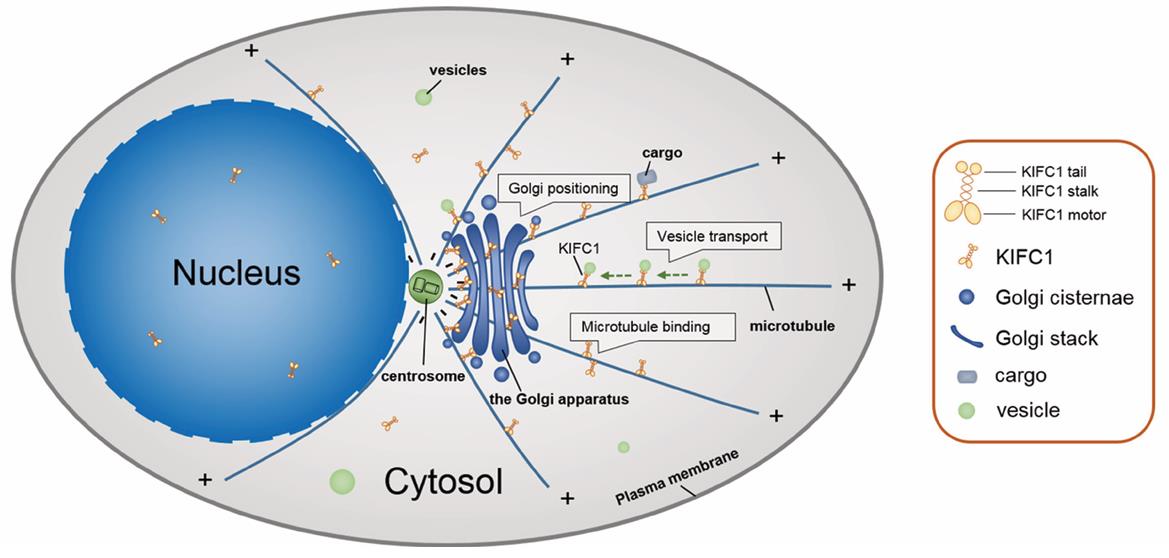
Fig1. The model for the functions of the minus end-directed kinesin-14 KIFC1 in the Golgi positioning and architectural maintenance in non-polarized mammalian cells. (Zhen-Yu She, 2017)
KIFC1 Related Signaling Pathway
In addition to being involved in meiosis spindle assembly during oocyte maturation, KIFC1 protein is also critical for actin dynamics, and its role does not depend on the classical MAPK signaling pathway. KIFC1 may affect the acetylation level of microtubules and participate in spindle stability by binding with acetylation and deacetylation enzymes such as HDAC6 and NAT10. In hepatocellular carcinoma (HCC), KIFC1 expression is correlated with tumor grade and TNM stage, and negatively correlated with overall survival and disease-free survival. KIFC1 promoter methylation level was negatively correlated with KIFC1 mRNA expression and the advanced stage and grade of HCC. In endometrial cancer, KIFC1 accelerates the proliferation and invasion of cancer cells by regulating the PI3K/AKT signaling pathway. Overexpression of KIFC1 promoted the proliferation, migration and invasion of cancer cells, while depletion of KIFC1 showed the opposite results.
KIFC1 Related Diseases
Abnormal expression of KIFC1 protein is closely associated with the development and prognosis of many cancers, including hepatocellular carcinoma, ovarian cancer, and endometrial cancer. In these cancers, high expression of KIFC1 is associated with tumor proliferation, invasion, metastasis, and adverse clinical outcomes by regulating microtubule dynamics, influencing cell cycle progression, participating in epithelial mesenchymal transformation (EMT), and associated with immune infiltration and signaling pathways such as PI3K/AKT. Therefore, KIFC1 is considered an important potential target for cancer therapy and a prognostic biomarker.
Bioapplications of KIFC1
As a protein associated with a variety of cancers, KIFC1's relevant off-the-shelf applications are mainly concentrated in the field of biomedical research, especially in the diagnosis and treatment of cancer research. High expression levels of KIFC1 are associated with tumor aggressiveness and poor prognosis, making it a potential biomarker for early detection of cancer, disease surveillance, and prognostic assessment. In addition, KIFC1's specific mechanisms of action in tumor cells, such as affecting microtubule dynamics and cell cycle progression, also make it a target for the development of novel anticancer drugs. Although there are currently no drugs directly targeting KIFC1 on the market, in drug development, KIFC1 inhibitors are being studied and may provide new strategies for cancer treatment in the future.
Case Study
Case Study 1: Li-Yan Liang, 2022
As an important member of the mitotic kinesin family, kinesin family member C1 (KIFC1) is abnormally expressed in a variety of tumors. However, the roles of KIFC1 in the development of osteosarcoma (OS) have never been elucidated. The expression of KIFC1 in OS tissues which was detected by immunohistochemistry (IHC) staining was further confirmed by Gene Expression Profiling Interactive Analysis 2 (GEPIA2) database. The relationship between KIFC1 and CDC20 was analyzed by clinical data, STRING database, and GEPIA2 database. Survival analysis was performed through GEPIA2 database. To elucidate the roles of KIFC1 in OS, MG-63 and U-2 OS cells were treated with short hairpin RNA (shRNA) to knock down KIFC1 expression. These results were consistent with our clinical data. Besides, KIFC1 was positively correlated with CDC20. In addition, KIFC1 shRNA could effectively silence KIFC1 expression in MG-63 and U-2 OS cells. Furthermore, the knockdown of KIFC1 inhibited the cell proliferation ability with increased cell apoptosis in MG-63 and U-2 OS cells.
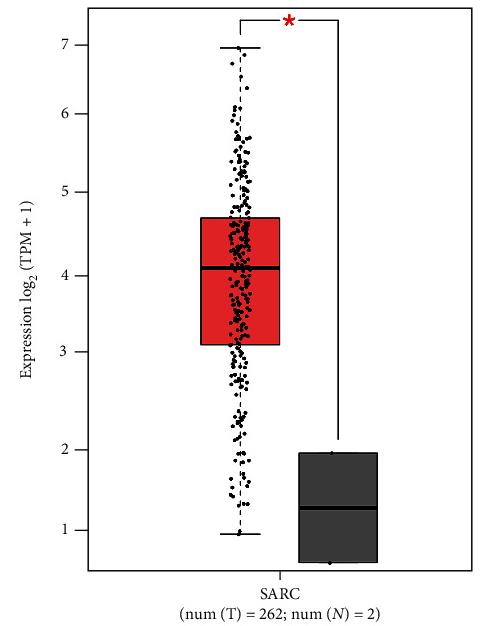
Fig1. The expression of KIFC1 between osteosarcoma and normal people in GEPIA2.
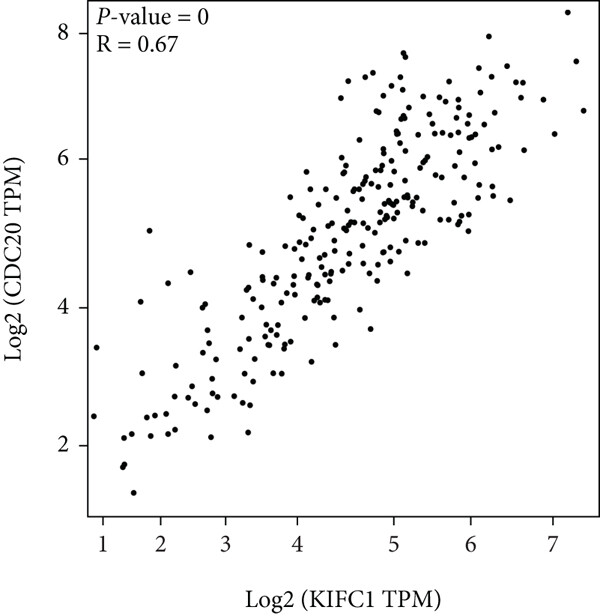
Fig2. Pearson analysis between KIFC1 and CDC20 in osteosarcoma determined among the GEPIA2 database.
Case Study 2: Laurie G Kostecka, 2021
Kinesins play important roles in the progression and development of cancer. Kinesin family member C1 (KIFC1), a minus end-directed motor protein, is a novel Kinesin involved in the clustering of excess centrosomes found in cancer cells. Recently KIFC1 has shown to play a role in the progression of many different cancers, however, the involvement of KIFC1 in the progression of prostate cancer (PCa) is still not well understood. This study investigated the expression and clinical significance of KIFC1 in PCa by utilizing multiple publicly available datasets to analyze KIFC1 expression in patient samples. High KIFC1 expression was found to be associated with high Gleason score, high tumor stage, metastatic lesions, high ploidy levels, and lower recurrence-free survival.
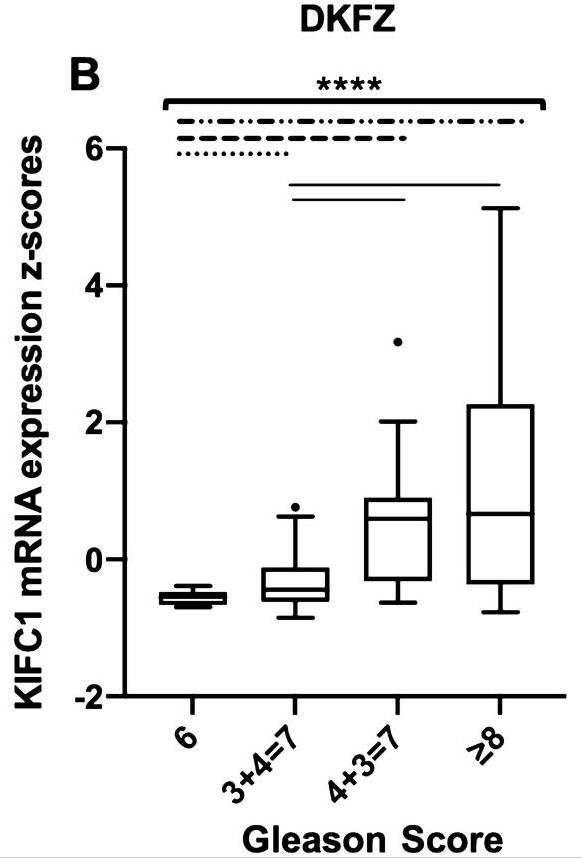
Fig3. DKFZ data of KIFC1 mRNA expression and Gleason scores.
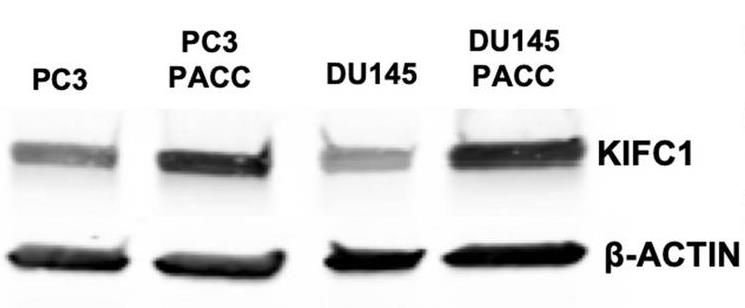
Fig4. Western blot comparing KIFC1 expression in different cell lines.
Quality Guarantee
High Purity
.jpg)
Fig1. SDS-PAGE (KIFC1-6454H)
Involved Pathway
KIFC1 involved in several pathways and played different roles in them. We selected most pathways KIFC1 participated on our site, such as Factors involved in megakaryocyte development and platelet production,Hemostasis,Kinesins, which may be useful for your reference. Also, other proteins which involved in the same pathway with KIFC1 were listed below. Creative BioMart supplied nearly all the proteins listed, you can search them on our site.
| Pathway Name | Pathway Related Protein |
|---|---|
| Hemostasis | GRB14,KIF3C,GLG1B,KCNMB1,DGKB,TRPC7,FCER1GL,GATA1,PRKCHB,F13A1B |
| Factors involved in megakaryocyte development and platelet production | CENPE,KIF5A,KDM1A,MFN1,HBG1,KIF3C,DOCK6,MYB,D-AKAP2,KIF3B |
| Kinesins | KIF2A,KIF20A,KIF2B,RACGAP1,KIF2C,KIF18A,KIF22,KIF4,KIF4A,KIF3B |
Protein Function
KIFC1 has several biochemical functions, for example, ATP binding,ATP-dependent microtubule motor activity, minus-end-directed,microtubule binding. Some of the functions are cooperated with other proteins, some of the functions could acted by KIFC1 itself. We selected most functions KIFC1 had, and list some proteins which have the same functions with KIFC1. You can find most of the proteins on our site.
| Function | Related Protein |
|---|---|
| microtubule motor activity | KIF15,KIF3CB,KIF13B,DNAH6,KIF23,SMC3,KIF14,KIF4A,APPBP2,KIF26A |
| microtubule binding | CHP1,NEFM,MAST2,NDEL1,MTAP6,REEP4,KIF5A,DPYSL5,CLASP1,MAPRE3B |
| ATP binding | BUB1B,CSNK1G2B,RAD54B,SRX1,AK9,CDK19,MYO1E,PSKH1,EIF4A1A,GM4922 |
Interacting Protein
KIFC1 has direct interactions with proteins and molecules. Those interactions were detected by several methods such as yeast two hybrid, co-IP, pull-down and so on. We selected proteins and molecules interacted with KIFC1 here. Most of them are supplied by our site. Hope this information will be useful for your research of KIFC1.
TRMT10C;Ndc80;Ranbp2;Kifc1;pi3p;ssdna_dcdg;Nek2;NUP153;KPNB1;Pdlim5;RNF169;PARD6B
Resources
Related Services
Related Products
References
- Ni, CZ; Wang, CY; et al. Detection of the quantity of kinesin and microgravity-sensitive kinesin genes in rat bone marrow stromal cells grown in a simulated microgravity environment. ACTA ASTRONAUTICA 68:1722-1728(2011).
- Mukhopadhyay, A; Nieves, E; et al. Proteomic analysis of endocytic vesicles: Rab1a regulates motility of early endocytic vesicles. JOURNAL OF CELL SCIENCE 124:765-775(2011).


